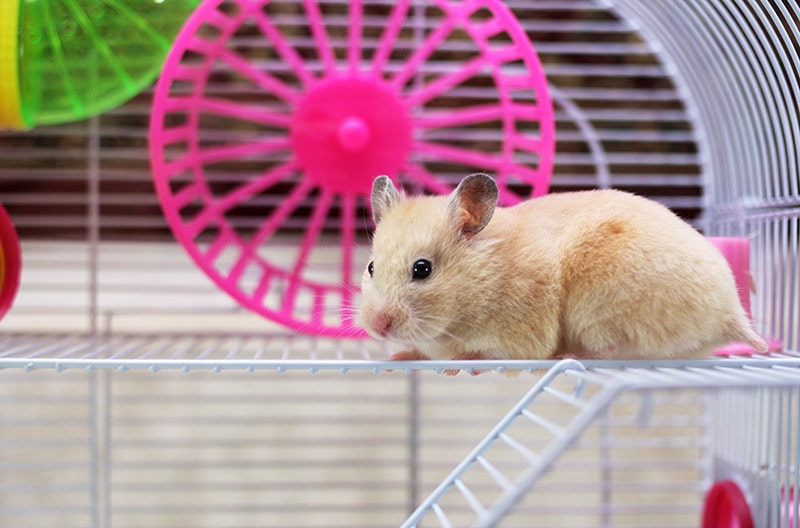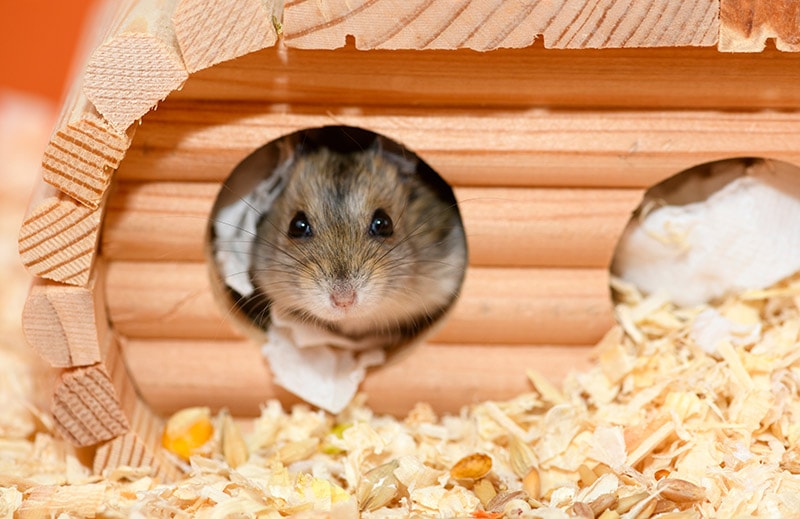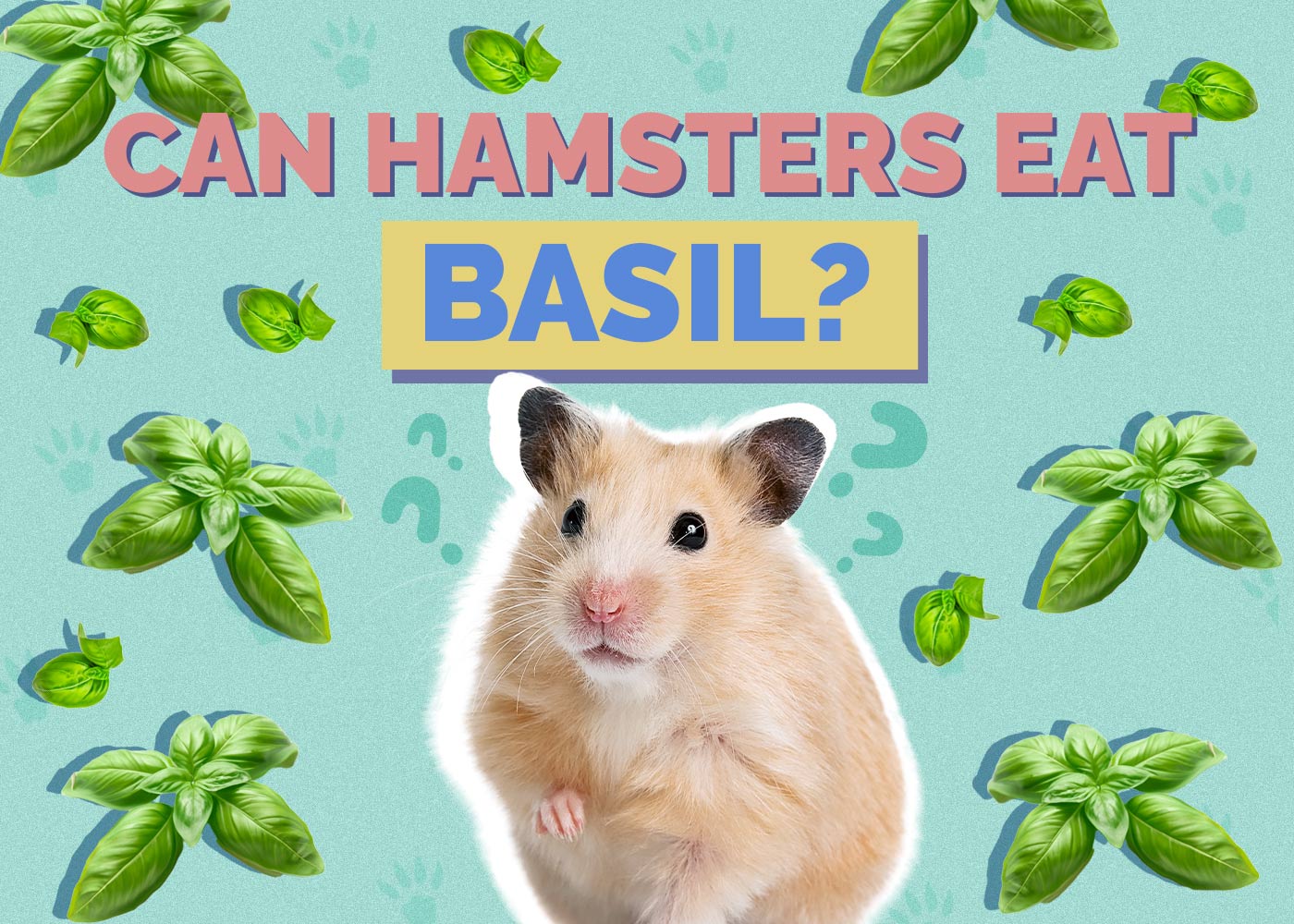Can Hamsters Eat Rice? Vet Approved Facts & FAQ

Updated on
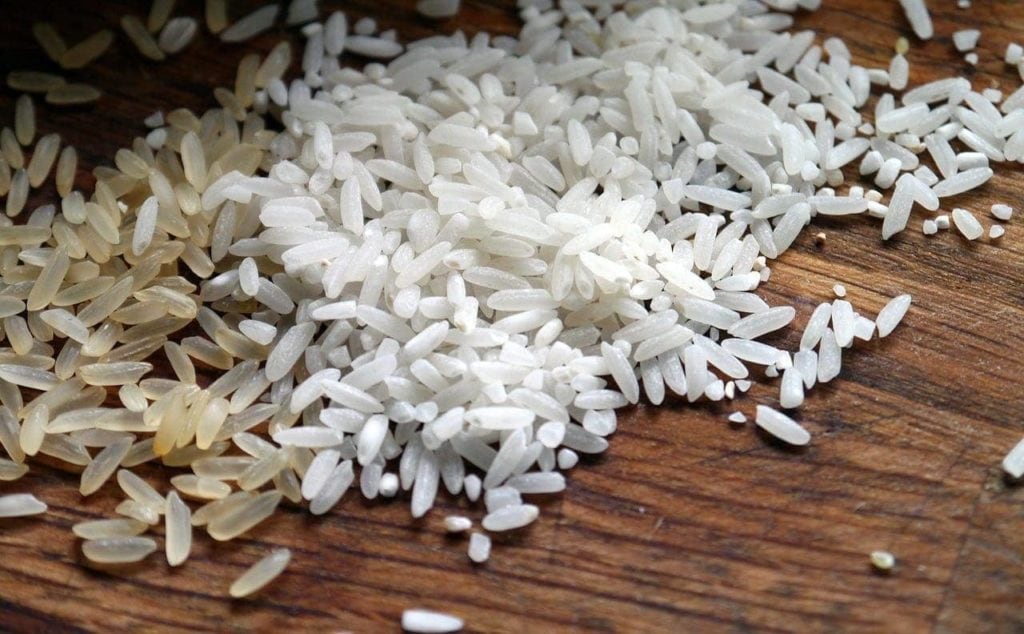
Click to Skip Ahead
Hamsters are small rodents that can make great pets. They are relatively low maintenance, although all pets need some degree of care to ensure they stay healthy and happy, and hamsters are no exception. With regular handling, they will tolerate being picked up, and they are fun to watch as they scurry around their cages and run in their wheels. It’s also entertaining to watch them fill their pouches with food, and these rodents will seemingly eat just about anything.
Just because they will eat anything, it doesn’t mean you should let them, and you do need to make sure that the foods and treats you give are healthy and balanced for hamsters. Rice is safe to feed to your hamster, although it doesn’t hold much nutritional benefit so it should be fed sparingly and occasionally and shouldn’t make up a major part of a hamster’s diet. It can be fed raw or cooked, although your hammie will find it easier to fit raw grains of rice in its pouch so this is usually the preferred method of serving.
 Hamster Diet
Hamster Diet
Hamsters are omnivores. In the wild, they would eat a combination of vegetable and animal ingredients. Wild hamsters would eat insects if the opportunity presented itself, and some may even eat frogs, lizards, and very small mammals. They also eat a variety of grasses, plants, and seeds.
In captivity, hamsters need a diet consisting of approximately 15-25% protein and 4-5% fat. This should come from commercial pelleted hamster food (not muesli), timothy hay and a small amount of fruits, vegetables and herbs. They can also have an occasional treat of a piece of boiled egg of a mealworm.
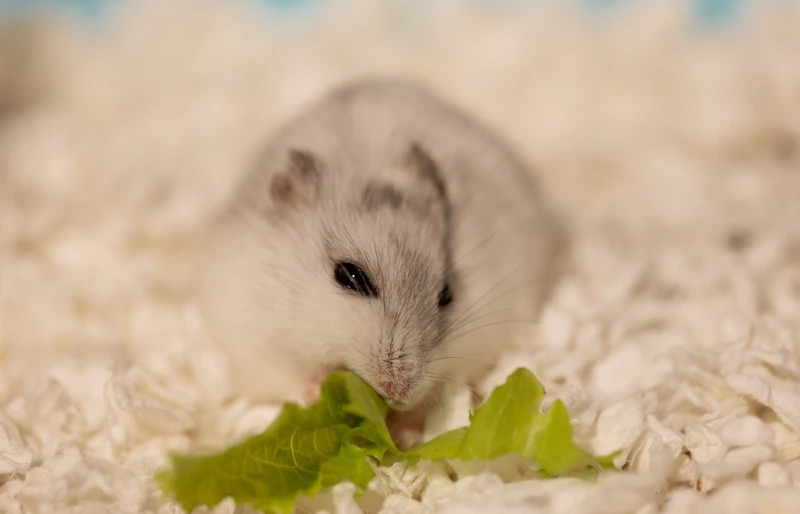
Can Hamsters Eat Rice?
Rice is not toxic to hamsters, which means they won’t get ill or suffer any direct negative effects from eating a few grains. However, rice does not offer much nutritional benefit to them. Whole-grain rice is healthier as the bran and the germ remains and contains some vitamin B as well as fiber, iron and magnesium. However, the levels are not high enough to make even whole-grain rice a beneficial addition to a hamster’s diet.
But your hamster may enjoy a few grains of rice as a treat, and it can add variety and excitement to the rodent’s diet.
Rice Feeding Guidelines
Rice can be fed raw or cooked. Hamsters usually prefer raw rice because they can more easily store it in their pouches, whereas cooked rice can be difficult to store and may be difficult to retrieve from their pouch. If you do cook the rice, it needs to be cooked well. It shouldn’t be undercooked or overcooked, because sticky rice can get stuck in your hamsters pouch, posing health risks for your hammie.
Rice is sometimes used in hamster treats and chew sticks because it bulks out the ingredients and it does tend to be quite popular with hamsters. You can also make your own chew sticks using rice, seeds, and other hamster-safe ingredients.

The 4 Ways to Keep Your Hamster Healthy
1. Feed Fruit and Vegetables
Hamsters eat some fruit and vegetables in the wild, and you can feed small amounts to your hamster to supplement their commercial food. Try to buy organic, ensure the food is washed before serving, and only feed a small cube of fruit and vegetables a day. Any more than this can cause diarrhea. Good, healthy options include carrots, pepper, cucumber, broccoli, and peas.
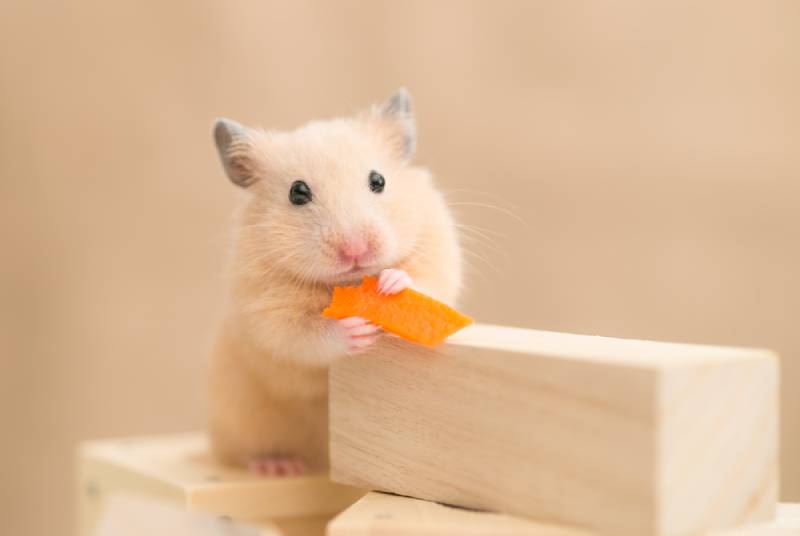
2. Choose Appropriate Bedding
Bedding is used in the bottom of hamster cages to soak up urine and feces. It also provides a soft surface for your hammie to walk on and encourages natural burrowing and digging behaviors. Recycled paper is a good choice (as long as it isn’t printed as ink can be toxic to hamsters), although it may not be the best for burrowing. You can add hay into the mix to help build stability and structure into the burrows. You should avoid pine and cedar wood shavings because they are too dusty for your hamster.
3. Provide Exercise
While you don’t put a leash on a hamster and take it for a walk like you would a dog, your little pet rodent still needs adequate daily exercise to stay fit and healthy. Offer an exercise wheel in the cage but ensure it is large enough for your hamster. A wheel that is too small will cause the hamster to curve in an unnatural position. The wheel must also be made of the correct material. Wheels made of thin metal bars can cause feet to become sore, and hamsters can get their feet trapped between the bars. Plastic wheels with small ridges or a textured surface have been shown to cause the fewest foot injuries. Hamster balls are not deemed to be safe because the risk of injury from the hamster banging into the wall or falling off a high surface is high. Hamster balls also don’t allow hamsters to retreat or orientate themselves, so cause hamsters considerable stress. Provide your hamster with branches to chew on and climb (a list of safe woods is available here), cardboard boxes to hide or burrow through, and hide treats around the enclosure to add enrichment and exercise to your hamster’s day.
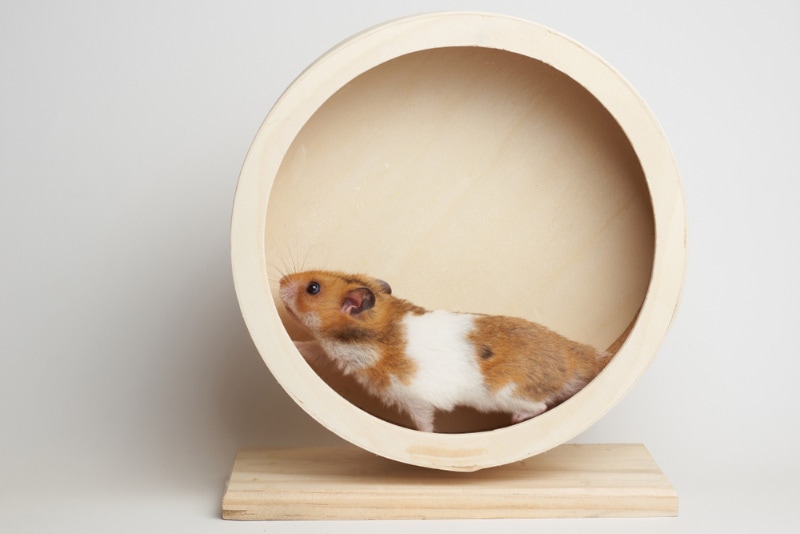
Frequently Asked Questions
How Much Rice Can a Hamster Eat?
Rice doesn’t offer much in the way of nutritional benefit which means you shouldn’t feed too much rice. Feed a few grains at a time and only once or twice a week. Do not feed rice daily or your hamster won’t be getting the vitamins and minerals it needs each day and will be filling up on empty calories.
Can Hamsters Eat Rice Every Day?
Hamsters shouldn’t eat rice every day because it offers little nutritional value but still fills them up. This means they will be getting less of their daily dietary requirements which may lead to deficiencies and malnutrition.
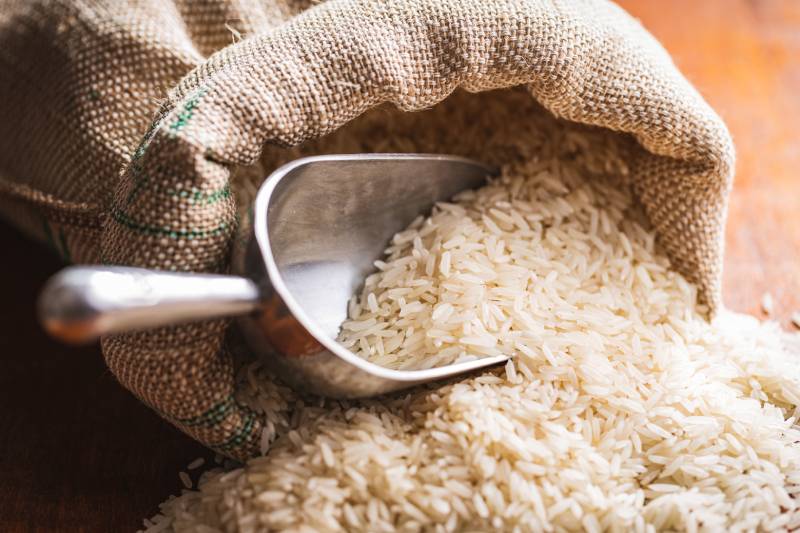
Can Hamsters Eat Pasta?
Pasta, like rice, is not considered nutritionally beneficial but, also like rice, it is safe and non-toxic. It can be fed dry or cooked and depending on the shape and size you can feed a piece every few days.
Can Hamsters Eat Cheese?
Hamsters can eat cheese and enjoy the smell and taste, but it is high in sodium and fat, so it isn’t considered to be a healthy addition to a hamster’s regular diet. If you do feed cheese, feed only a very small piece, roughly the size of a pea, once a week at the most.
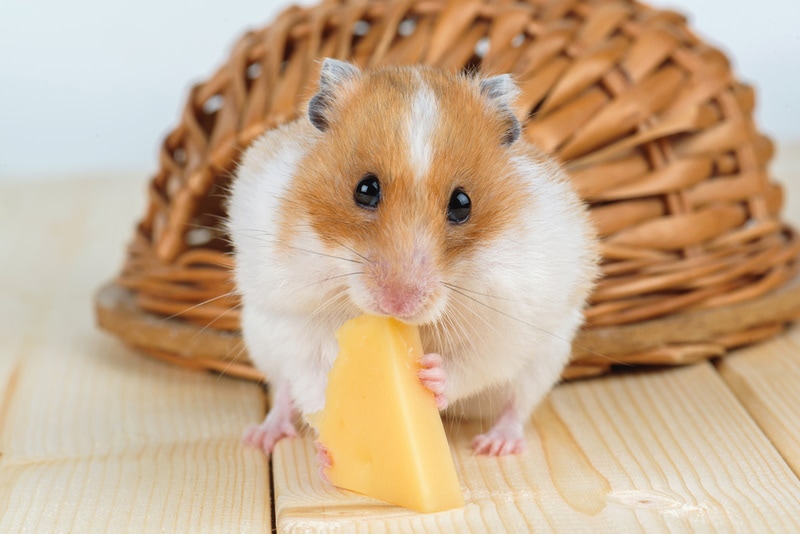
Conclusion
Hamsters will eat most things you put in front of them, but that doesn’t mean they should. You do need to check what your hamster is eating and as well as ensuring it isn’t toxic, you should also determine its nutritional value. If you feed too many treats that don’t offer essential vitamins and minerals, your hamster will fill up on these and avoid their more “boring” but nutritionally beneficial pelleted food. Therefore they won’t be receiving a balanced or healthy diet.
Rice is safe for hamsters to eat but doesn’t provide any nutritional benefits, so you should only feed a few grains a week. It can be fed cooked, but it is better to feed raw grains because they are less likely to get stuck in the cheek pouches.
See Also:
- Can Hamsters Eat Bacon? Vet-Approved Nutrition Facts
- Can Hamsters Eat Pecans? Vet Approved Nutrition Facts & FAQ
Featured Image Credit: ImageParty, Pixabay

 Hamster Diet
Hamster Diet